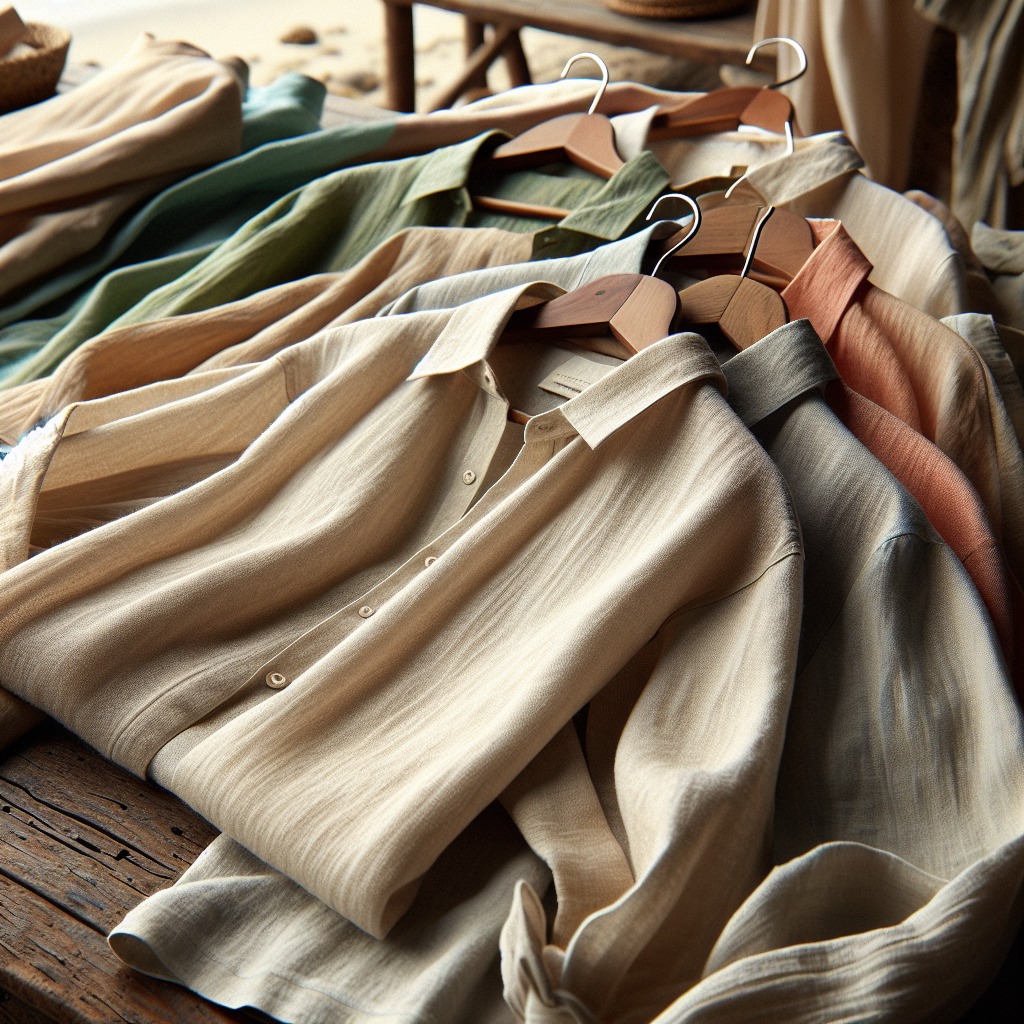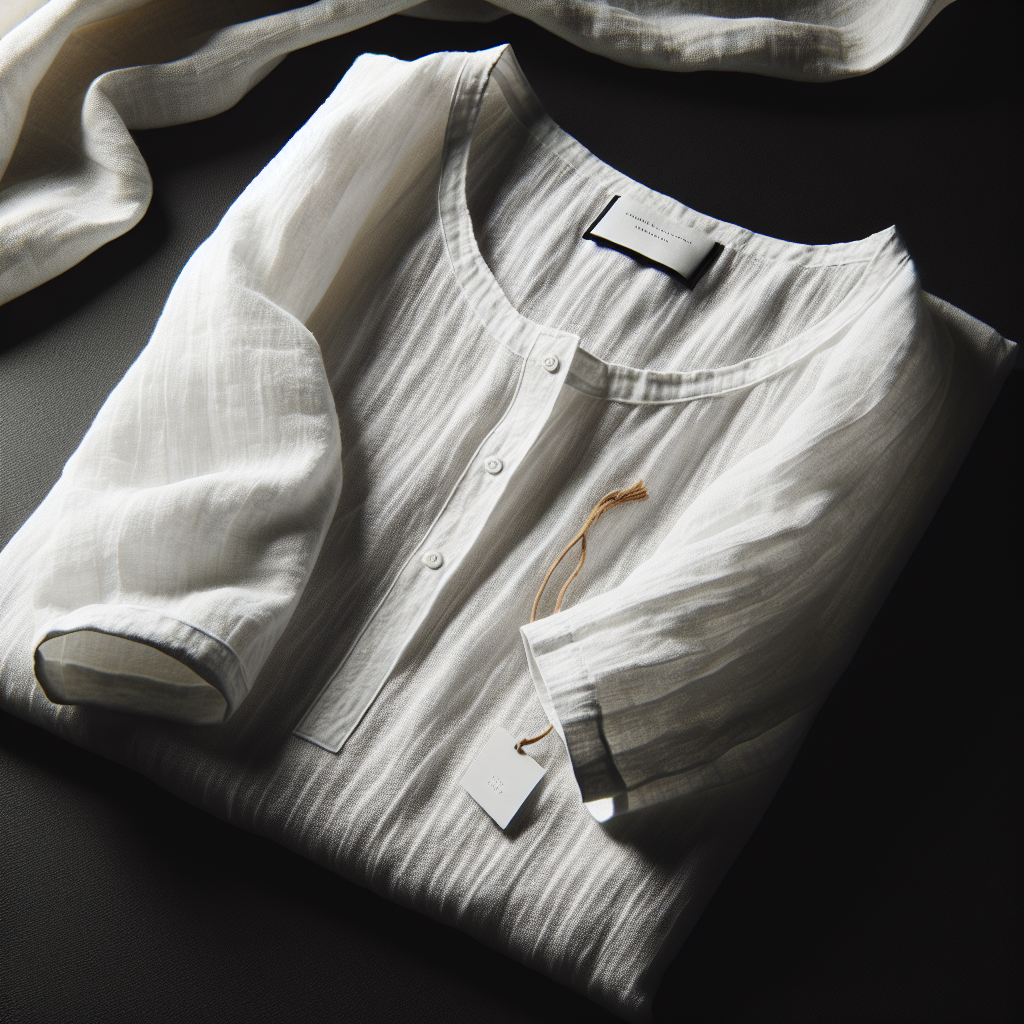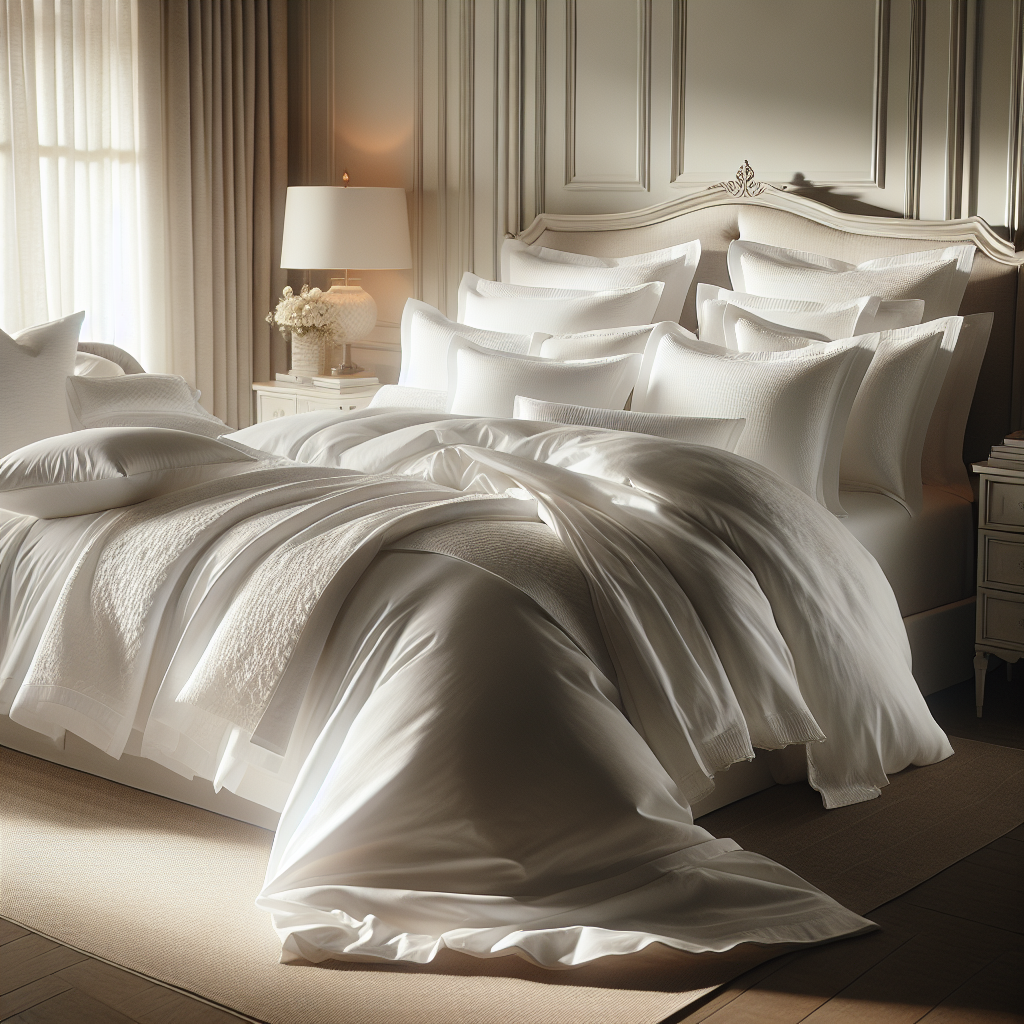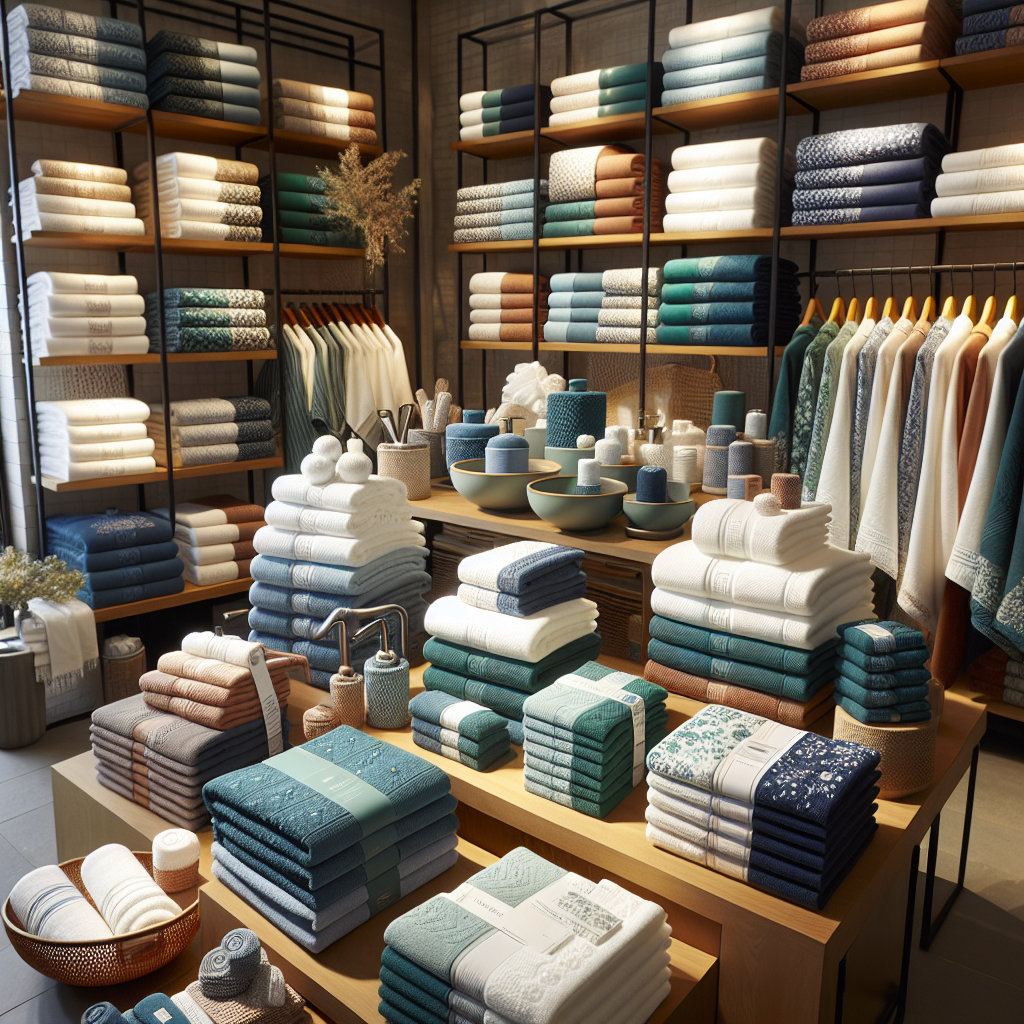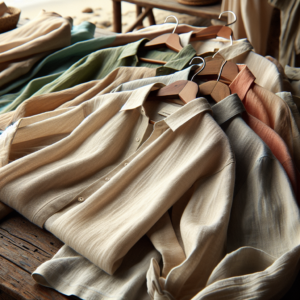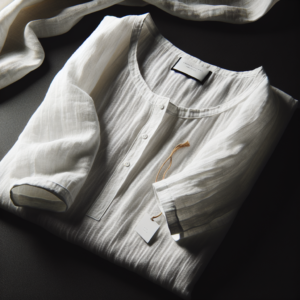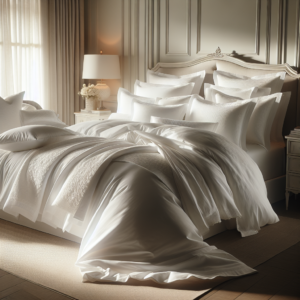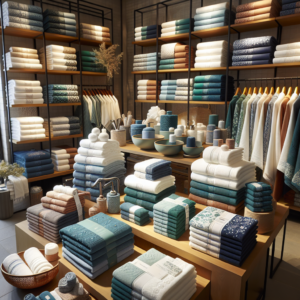The History of Linen Production in Lexington, Kentucky
Linen is a versatile and durable fabric that has been used for centuries in various forms. From clothing to household items, linen has been a staple in many cultures around the world. In the United States, one city that has a rich history in linen production is Lexington, Kentucky. This southern city has been a hub for linen production for over a century, and its impact on the industry is still felt today.
The history of linen production in Lexington dates back to the early 1800s when the city was known as the “Athens of the West” due to its thriving economy and cultural scene. At that time, Lexington was a major producer of hemp, which was used to make rope and other industrial products. However, as the demand for hemp decreased, the city turned its attention to linen production.
One of the key factors that contributed to the success of linen production in Lexington was the abundance of flax, the plant from which linen is made. The fertile soil and mild climate of the Bluegrass region made it an ideal location for growing flax. Farmers in the area quickly realized the potential of this crop and began to cultivate it on a large scale.
In the mid-1800s, Lexington became home to several linen mills, including the Lexington Linen Company and the Kentucky Linen Mills. These mills employed hundreds of workers and produced a wide range of linen products, from bed sheets to tablecloths. The quality of the linen produced in Lexington was renowned, and it quickly gained popularity across the country.
The linen industry in Lexington continued to thrive throughout the 19th and early 20th centuries. However, it faced a major setback during the Civil War when many of the mills were forced to shut down due to the shortage of labor and resources. But as the war ended, the industry bounced back, and by the late 1800s, Lexington was once again a major player in the linen market.
One of the most significant developments in the history of linen production in Lexington was the introduction of power looms in the late 1800s. These machines revolutionized the production process, making it faster and more efficient. As a result, the demand for linen products increased, and the industry in Lexington continued to grow.
In the early 1900s, Lexington’s linen mills faced tough competition from other cities, such as New York and Boston, which were also major producers of linen. To stay ahead, the mills in Lexington focused on producing high-quality, hand-woven linen, which was in high demand among the elite. This strategy paid off, and Lexington’s linen industry continued to thrive.
However, the Great Depression of the 1930s dealt a severe blow to the linen industry in Lexington. Many mills were forced to close, and those that survived had to adapt to the changing market. The introduction of synthetic fabrics also posed a challenge to the linen industry, but Lexington’s mills managed to stay afloat by diversifying their products and catering to a wider market.
Today, the linen industry in Lexington is not as prominent as it once was, but its legacy lives on. Some of the old mills have been converted into museums, showcasing the city’s rich history in linen production. And while the production of linen has decreased, there are still a few companies in Lexington that continue to produce high-quality linen products, keeping the tradition alive.
In conclusion, the history of linen production in Lexington, Kentucky, is a testament to the city’s resilience and adaptability. From its humble beginnings as a hemp-producing city, Lexington became a major player in the linen market, thanks to its fertile land, skilled workers, and innovative techniques. Today, the city may not be at the forefront of the linen industry, but its contribution to the development of this versatile fabric cannot be overlooked.
Sustainable Practices in the Linen Industry: A Look at Lexington Companies

The linen industry has been around for centuries, providing us with soft and durable fabrics that are used in a variety of products. However, with the rise of fast fashion and mass production, the linen industry has also faced its fair share of challenges. In recent years, there has been a growing concern about the environmental impact of the textile industry, and many companies are now looking for ways to incorporate sustainable practices into their operations. In this article, we will take a closer look at some of the linen companies in Lexington, Kentucky, and how they are implementing sustainable practices in their production processes.
One of the leading linen companies in Lexington is Bluegrass Linen Co. Founded in 1995, this family-owned business has been providing high-quality linens to hotels, restaurants, and healthcare facilities in the area. However, in recent years, they have also made a conscious effort to reduce their environmental footprint. One of their main initiatives is the use of organic cotton in their linens. By using organic cotton, they are not only reducing the amount of harmful chemicals used in the production process, but they are also supporting sustainable farming practices.
Another company that is making strides in sustainability is Lexington Linen Co. This company specializes in luxury linens for the hospitality industry, and they have recently introduced a new line of linens made from recycled materials. By using recycled materials, they are reducing the amount of waste that ends up in landfills and also conserving natural resources. In addition, they have implemented a recycling program within their own facilities, ensuring that any waste produced during the production process is properly disposed of or reused.
In addition to using sustainable materials, many linen companies in Lexington are also focusing on reducing their energy consumption. For example, Bluegrass Linen Co. has invested in energy-efficient machinery and lighting systems, which has resulted in a significant decrease in their energy usage. They have also implemented a water conservation program, which has not only reduced their water consumption but has also led to cost savings for the company.
Another important aspect of sustainability in the linen industry is the treatment of workers. Many companies in Lexington have recognized the importance of fair labor practices and are taking steps to ensure that their workers are treated ethically and fairly. For instance, Lexington Linen Co. has partnered with local organizations to provide training and education programs for their employees, ensuring that they have the necessary skills and knowledge to excel in their roles. They also offer competitive wages and benefits, creating a positive work environment for their employees.
Furthermore, some companies are also looking at ways to reduce their carbon footprint by implementing eco-friendly transportation methods. For example, Bluegrass Linen Co. has switched to using electric vehicles for their delivery services, reducing their carbon emissions and contributing to cleaner air in the community.
In conclusion, the linen industry in Lexington, Kentucky, is taking significant steps towards sustainability. From using organic and recycled materials to implementing energy-efficient practices and promoting fair labor practices, these companies are setting an example for others in the industry. By incorporating sustainable practices into their operations, they are not only reducing their environmental impact but also creating a positive impact on their local community. As consumers, we can also play a role by supporting these companies and choosing sustainable products whenever possible. Together, we can make a difference and create a more sustainable future for the linen industry.
Exploring the Versatility of Linen: Innovative Uses in Lexington, Kentucky
Linen, a fabric made from the fibers of the flax plant, has been used for centuries for its durability, breathability, and luxurious feel. While traditionally used for clothing and household linens, this versatile fabric has found its way into various industries and applications, including in Lexington, Kentucky.
Known for its horse racing, bourbon, and bluegrass music, Lexington is also home to a thriving linen industry. With its rich history and modern innovations, linen has become a staple in the city’s economy and culture.
One of the most prominent uses of linen in Lexington is in the fashion industry. The city is home to several high-end fashion designers who have incorporated linen into their collections. The fabric’s lightweight and breathable nature make it perfect for the hot and humid summers in Kentucky. Designers have also been experimenting with linen blends, creating unique textures and patterns that add a touch of sophistication to their designs.
But linen’s versatility goes beyond fashion. In recent years, the fabric has been making its way into the interior design industry in Lexington. With its natural and earthy tones, linen adds a touch of warmth and elegance to any space. It is also a sustainable and eco-friendly option, making it a popular choice among environmentally conscious homeowners.
One of the most innovative uses of linen in Lexington is in the construction industry. Linen fibers have been used to reinforce concrete, making it stronger and more durable. This technique has been used in the restoration of historic buildings in the city, preserving their architectural integrity while also making them more resilient to natural disasters.
In the food and beverage industry, linen has also found its place. The city’s renowned bourbon distilleries use linen bags to filter their spirits, giving them a smoother and more refined taste. Linen is also used in the production of tea bags, providing a natural and sustainable alternative to traditional paper or plastic bags.
But perhaps one of the most unexpected uses of linen in Lexington is in the healthcare industry. Linen’s antibacterial and hypoallergenic properties make it an ideal fabric for medical scrubs and hospital linens. In addition, linen’s ability to wick away moisture makes it a comfortable and practical choice for healthcare workers who are constantly on the move.
The versatility of linen has also extended to the world of sports in Lexington. The city is home to several equestrian events, and linen has become a popular choice for horse blankets and saddle pads. Its moisture-wicking properties help keep the horses cool and comfortable during competitions.
Aside from its practical uses, linen has also become a symbol of luxury and sophistication in Lexington. Many high-end hotels and restaurants in the city use linen tablecloths and napkins to elevate their dining experience. The fabric’s natural wrinkles and texture add a touch of elegance to any setting.
In conclusion, the versatility of linen knows no bounds in Lexington, Kentucky. From fashion and interior design to construction and healthcare, this fabric has found its way into various industries and applications. Its sustainable and eco-friendly nature, combined with its durability and luxurious feel, make it a popular choice among businesses and consumers alike. As the city continues to grow and innovate, it is safe to say that linen will remain a staple in Lexington’s economy and culture for years to come.

